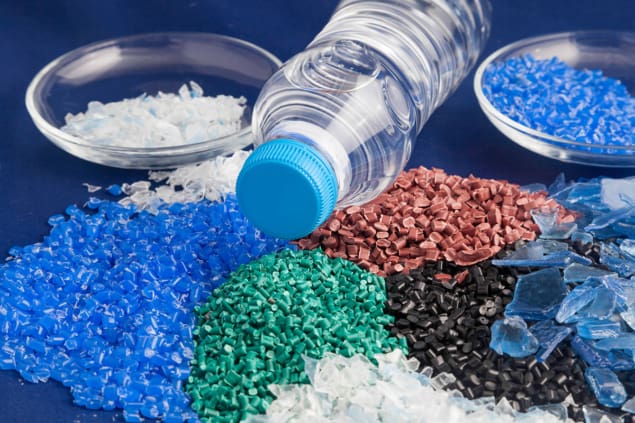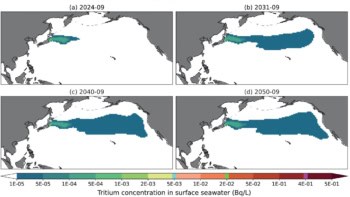
Jakarta’s rivers discharge more than 2000 tonnes of plastic into the sea each year. That’s about 3% of the Indonesian capital region’s annual “unsoundly disposed” plastic waste, i.e. any that ends up in the natural environment.
To come up with the figure, researchers in the Netherlands measured the amount and type of plastic flowing through the region’s five largest rivers. A better understanding of plastic transport in and around Indonesia’s capital could inform clean-up strategies for Java’s infamously polluted beaches, although the results will not necessarily carry over into other urbanized river systems.
Awareness of the problem of marine plastic pollution is increasing, but a lack of observations means it’s not clear how this material finds its way to the sea. Most studies conducted so far have focused on rivers in Europe and North America even though Southeast Asia is thought to be the region that contributes the most.
Addressing this discrepancy, Tim van Emmerik of Wageningen University in the Netherlands and colleagues looked at the situation in Jakarta. Here pollution from large coastal populations threatens the sensitive marine environment of the Coral Triangle, an area of exceptionally high biodiversity.
Over a two-week period in May 2018, van Emmerik and colleagues counted how much plastic was visible at five locations where Jakarta’s largest rivers run into the Java Sea. They also used nets to trawl for samples at the surface and at a depth of 0.5–1 m. In addition to these five river mouths, the team monitored two locations further from the coast so that they could estimate how much waste originates upstream of the city.
Most of the plastic waste came from Jakarta itself. Although the exact make-up of the material varied from site to site, plastic fragments larger than 1 cm were dominated by bags, films and foils, indicating a domestic origin.
“The plastics found to date are highly representative of typical household waste,” says van Emmerik. “This could mean that individuals dump waste directly into the water system. Or waste bins can leak, plastic can leak on the way from collection point to processing plant, etc.”
Indonesia’s rainy season is in January and February; river discharge can reach five times that of the flow rates seen over the observation period in May. To account for this variation, the researchers extrapolated from their measurements assuming a constant ratio of plastic to water.
“For the moment, this is the best working hypothesis available,” says van Emmerik. “Other studies have shown that plastic concentrations can increase, decrease or remain the same with increased river discharge.”
Based on this assumption, the researchers estimate that plastic entering the sea from Jakarta’s rivers makes up at least 1% of Indonesia’s total emission. This means that the city’s river catchments carry plastic at a rate of more than 20 times the national average on a per-area basis.
Identifying the scale and origin of Jakarta’s waste plastic problem will help remediation efforts on a local scale, but it is not clear how far the results can be generalized.
“So far it seems that every river has its specific plastic-waste DNA,” says van Emmerik. “Understanding plastic transport in detail will help specific cities and catchments in optimizing prevention, mitigation and collection strategies, but more observations are needed before we can generalize plastic sources, sinks, pathways and driving mechanisms.”
van Emmerik and colleagues reported their findings in Environmental Research Letters (ERL).



